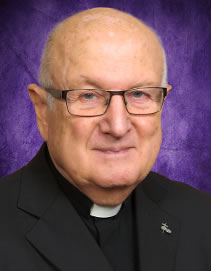
From the Director
Myanmar (formerly Burma) in Southeast Asia is a nation of scintillating beauty, copious resources and a wonderfully diverse population. There are eight major tribes and 135 subtribes. This a colorful nation which was once the envy of Southeast Asia. Despite great resources, Myanmar looks for aid from rich countries.
A few years ago, I had the privilege of visiting Myanmar and had dinner with Archbishop Bo. His nation has been wounded by festering civil wars for six of the seven decades of its existence. Much blood and many tears have been shed.
The numbers are daunting: nearly a million internally displaced people, nearly a million fled as refugees, and nearly four million forced into distress migration, while twenty-two internal conflicts continue to simmer.
The dream of human dignity is elusive; war has frustrated sustainable development. Archbishop Bo, amid conflict, is trying to rally religious leaders of all faiths to light a candle of hope with one mantra–Peace is possible. Peace is the only way.
Myanmar is a deeply religious country. Her culture is soaked in reverence for religious people. The world and civil society need to take into account that religious leaders can be influential in peace making.
Myanmar is largely Buddhist. There are 500,000 monks and 70,000 Buddhist nuns. By contrast, the Catholic Church has 800 priests and 2,200 nuns. Many of these live in remote villages, influencing the people’s lives and faith. Their role in maintaining peace through imparting values like compassion is an extraordinary contribution to the peace, according to the Archbishop.
One could say that compassion is a common creed to all religions. After all, humanity is one huge family. We are all brothers and sisters. We share the same spirit: We are inter-dependent. We are one.
One could say that compassion is a common creed to all religions.
Religions for Peace is an international organization of religious leaders and laity. For the last two years, Religions for Peace has managed to gain the confidence of the main stakeholders in Myanmar. In a gesture of peacemaking, the government arranged for a visit to the displacement affected Rakhine areas. This visit was helpful in cooling down the situation and also building confidence, opening the doors of dialogue. This visitation team consisting of Buddhist monks, Christian leaders, Muslim leaders, Hindu leaders, among others. The composition of the team was a great witness in a country where inter-religious attacks were increasing.
The second meeting of the Religions for Peace was a robust affair with the nation’s leader and representatives of the government and the civil society participating.
The Catholics have been in the forefront connecting non-state actors and armed groups. Many of the groups are Christian groups. Churches actively work for peace and have helped the government to dialog with groups. There are specific cases in which peace deals were agreed based on the initiatives of the Catholic Bishops.
Even calamities can provide space for religious leaders to promote the message of peace through compassion. In times of natural calamity or conflict, the religious leaders visited the affected areas as a group and helped the people without any reference to religion or race.
Recently the Catholic Church has analyzed the root causes of conflict in Myanmar and suggested major areas for nation-building which could bring the blessing of peace. These are education, integral human development, women’s development, indigenous rights and inter-religious initiatives for peace. The church is eager to collaborate in all these areas.
Archbishop Bo looks for a new era in Myanmar that would see the government and others join hands with religious leaders to fulfill the goal of sustainable development.
“…peace among men of good will.”